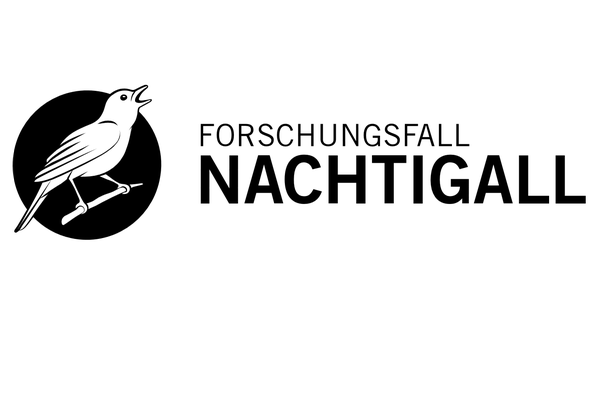The Nightingale Research Project - a citizen science project on the natural and cultural history of nightingales
from 01/01/2018 until 30/06/2020
Nightingales in Berlin
Berlin, in spring, becomes the capital city for nightingales. Thousands of nightingales (Luscinia megarhynchos) arrive in Berlin and in gardens, parks, along railway lines and even on busy street corners. From Grunewald to Pankow, these songsters’ melodic whistling and gurgling song can be heard, elating the attentive Berlin listeners. Songs, poems, pictures and stories show the fascination and love that people have for the nightingales. But how much do scientists actually know about these little migrant birds?
Citizen Science
A group of scientists at the Museum of Natural History Berlin (MfN) are calling on the help of the public to become citizen scientists and record the nightingales’ songs with their smart phones using the Naturblick app (developed by the MfN). These snippets of song are then downloaded onto the Nightingale website map (Berlin 2018, Germany wide 2019) for all to hear and analyse. The recordings and other information collected by the citizen scientists are used to reveal understanding on the private lives of these little songsters.
Culture
There is probably no other bird that has received as much attention in literature and music as the nightingale. Certainly, this is due to its complex, often beautifully versatile singing. What does the nightingale mean to you? Have you yourself listened to its song, does it have a special place in your life? These are some of the questions we asked our citizen and received exciting answers and stories, which we have collected in our anecdotes book. In addition, we organize various events, which take place throughout the year to engage with the citizen scientists and explore the cultural perspective of the nightingale.
Citizen Science at School
Urbanisation is progressing uninterrupted worldwide. This increases the responsibility of cities for the preservation of biodiversity both outside and inside city boundaries. This is particularly true for Berlin, Germany's largest metropolis and the city with the richest diversity. A key objective of urban nature conservation is to bring the city's nature closer to its inhabitants. Children and young people in particular should be encouraged to do so by making the city's nature tangible and drawing attention to the preservation of green oases for more urban diversity in flora and fauna.
One aim of the environmental education of the project is to give students the opportunity to experience Berlin's urban nature and its scientific recording using the nightingale as an example. The nightingale is particularly suitable for this purpose, as its powerful-voiced males make it easy for beginners to determine the bird's voice. In this context, we investigated the effectiveness of Citizen Science on the interest of students in nature and environmental protection.
Aim
The aim of the project is to involve citizen scientists in the research of the natural and cultural history of nightingales. This will not only make a scientific contribution to the research on the nightingale, but improve the understanding of science and strengthen the interest in nature in particular. The participation of citizen scientists in several steps of the scientific process – from project design, data acquisition to scientific publication – is the main focus of the Nightingale Research Project. In addition, various events take place throughout the year to engage with the citizen scientists and explore the cultural perspective of the nightingale.
Needed equipment
Naturblick App, which can be downloaded at http://naturblick.naturkundemuseum.berlin/
About branding
Profile image design by: Josef Vorholt
Created Feb. 24, 2021, 5:29 p.m.
Updated Feb. 24, 2021, 5:29 p.m.

